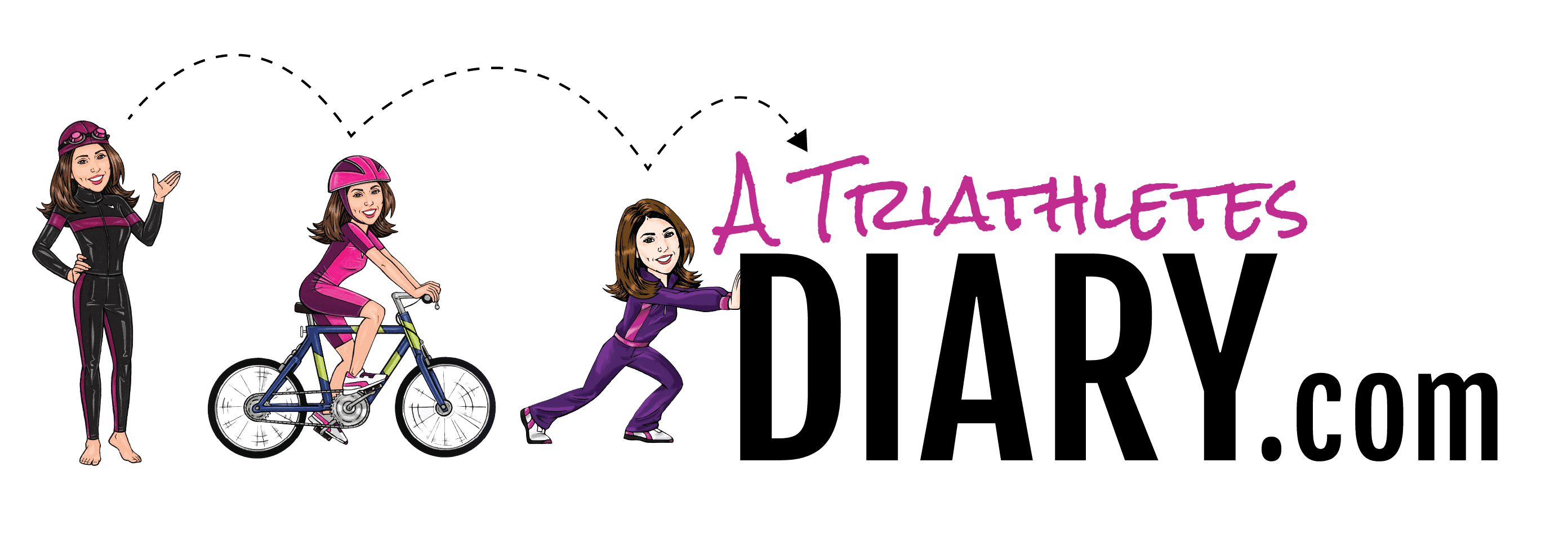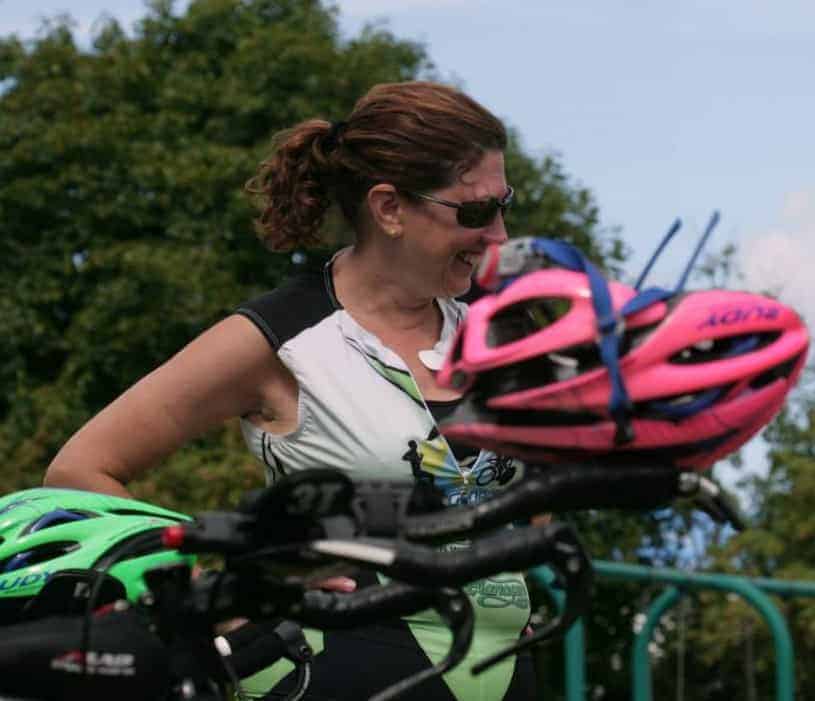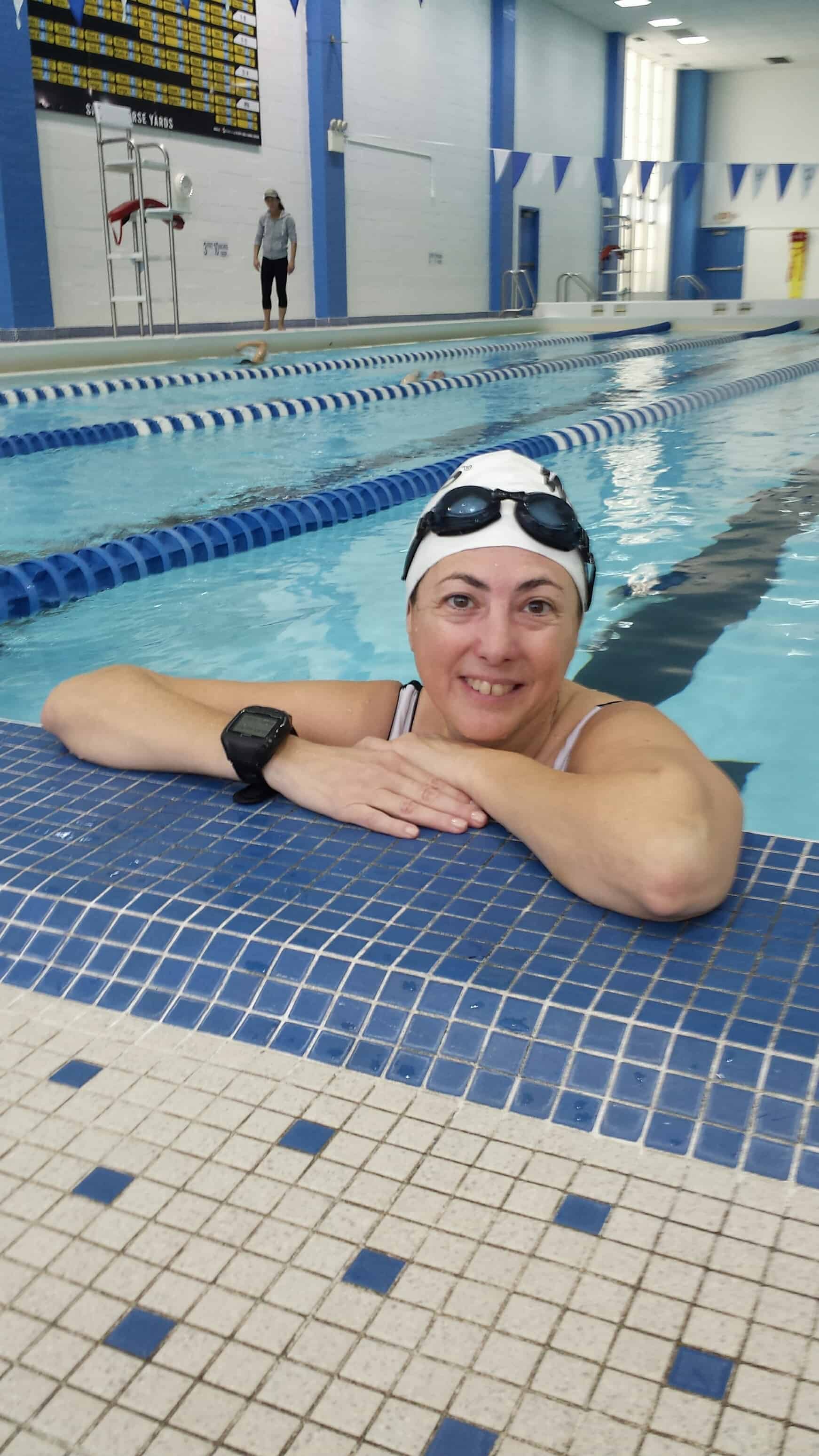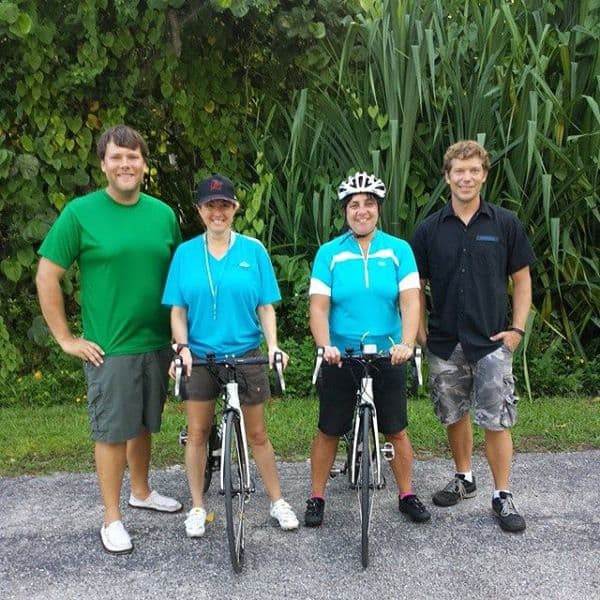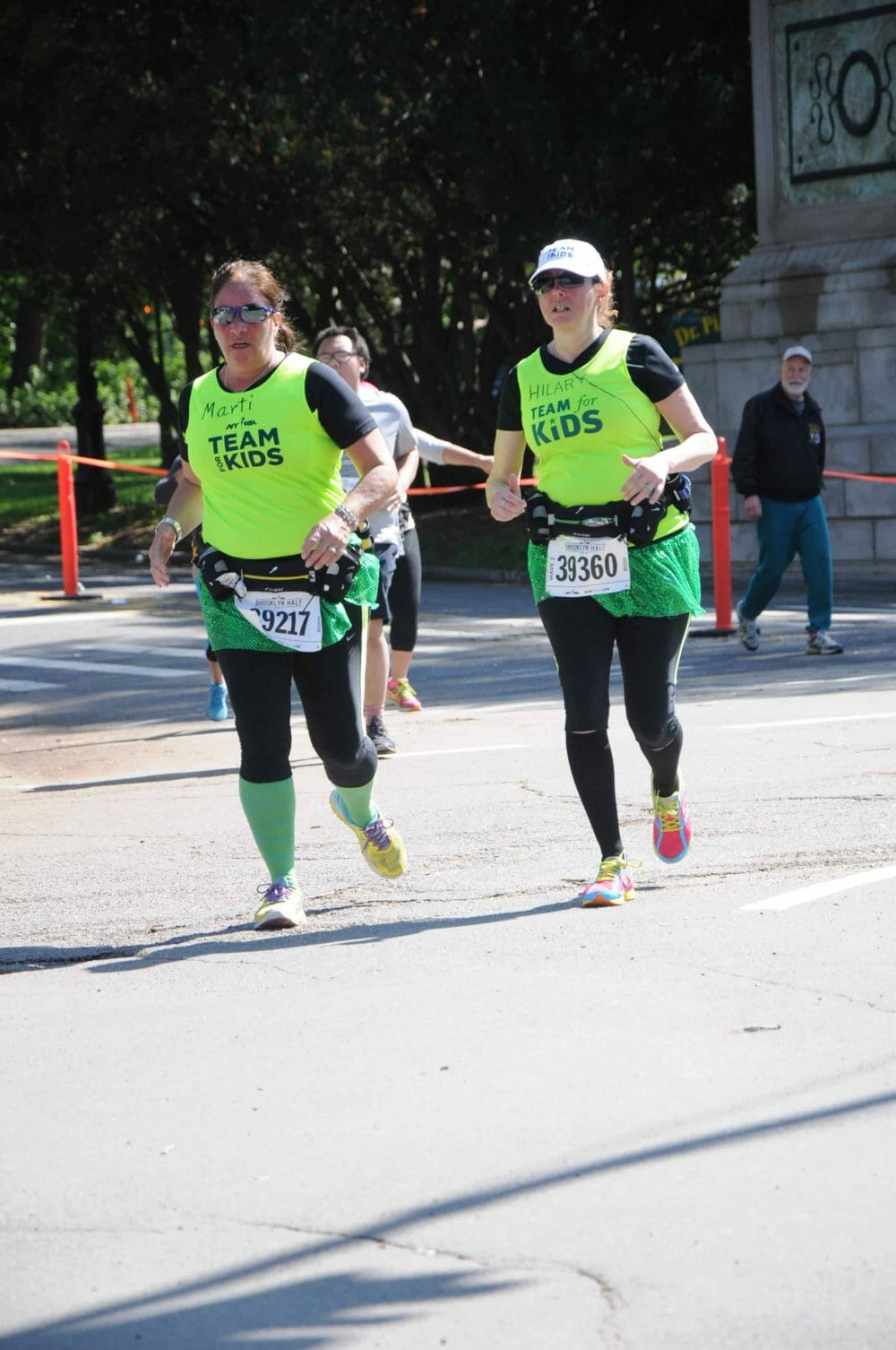If someone asked me a year ago, what it takes to be a triathlete, I would have said, “Hmmm…someone who could swim, bike and run?”
What I didn’t realize is, there are two other disciplines to master — transitions and proper nutrition/hydration. Both seem simple on the surface, but are actually quite complicated.
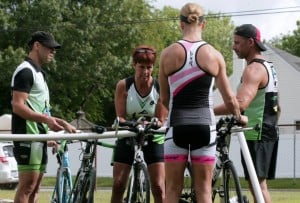
Since I started training for the Captiva Tri in mid-September, I didn’t really think much about transitions, but I knew they were important.
The faster you get out of T1 (that’s the first transition area from Swim to Bike) and then T2 (Bike to Run), the better you will do with your overall time. As you get better at this sport, seconds count. So this is one of the important areas to focus on during the training.
Rich Caiazza, my coach at Tri-Global Coaching, put up a post on Facebook — “Anyone interested in a transition clinic, I’m having one at my house on Saturday.”
I told him I was in and on Saturday, I left ample time and headed out an hour east to his home.
I met up with five other teammates also interested in getting faster during transitions. (I just wanted to wrap my head around the whole concept. I never even did a triathlon and didn’t know the first thing about transitions.)
We set up the bikes and Coach Rich showed us the proper way to position our bike gear and running gear in front of the bike.
“Put the stuff that you need first in front,” he said. “Make sure to put the helmut upside down on the seat and put your glasses in there, so you could easily pop it on and go.”
Next, we ran with the bikes. After you dismount, you need to run a bit with the bike and Rich showed us how. The tri bikes seemed to handle the running a lot better than my road bike. I was running and the bike was all over the place. I just couldn’t get it straight.
Rich and my teammate, Carrie, told me to run faster but running fast in cycling shoes is not the easiest thing to do… I tried anyway!
Things I learned at the clinic:
- Don’t fuss with your hair — either put it in a low pony or braids and keep it like that for the entire race, otherwise expect to lose time.
- Take your wetsuit off before you leave the water — my teammate, Eric, had a great point. He told me to take off the bathing cap and goggles then pull down the zipper on the wetsuit and take half of it off before you leave the water.
- Shed the Socks — Rich told us it will be hard to put socks on wet feet so “wear your bike shoes and sneakers without socks,” he said. I asked him what about blisters and he said that there are some shoes like, Zoot Sneakers, that don’t give blisters. (I guess I’ll give them a try.)
- Wear a Visor instead of a Cap — My teammates agreed that a visor is quicker to put on than a cap.
- Get a Running Belt — I’ve been using the iFitness belt that I bought at the Disney Tower of Terror Expo last year. It’s comfortable and holds a lot but it isn’t light, especially when there is fluid in my two 8 ounce bottles. Coach Rich and the rest of the team told me to dump it. “You don’t need hydration for a 5K,” said Carrie. “They have water on the course.” Rich agreed and said I need a place to hang my number. “You can wear it around the back and then when you approach the finish line bring it to the front. This way, it won’t bother you,” he said.
- Get a Tri Bag — I went to the clinic with five bags filled with different gear. When Coach Rich saw what I had, he told me to go out and buy a tri bag that would hold everything for the triathlon including the wetsuit, sneakers, helmut, cycling gear, etc.
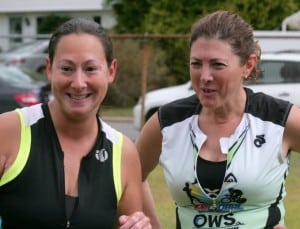
Rich showed the team some mounting and dismounting techniques but for me, as a newbie, I thought I would just go with what I know, which is stop the bike put my leg over a tilted bike, put my foot on the pedal and go.
At this point, if I tried these techniques, I think I would fall and break something…
In any event, the transition clinic was a success for everyone who attended. It was particularly great to spend the morning with my teammates — Constance, Carrie, Jean, Drew, Eric and of course, our coach, Rich.
